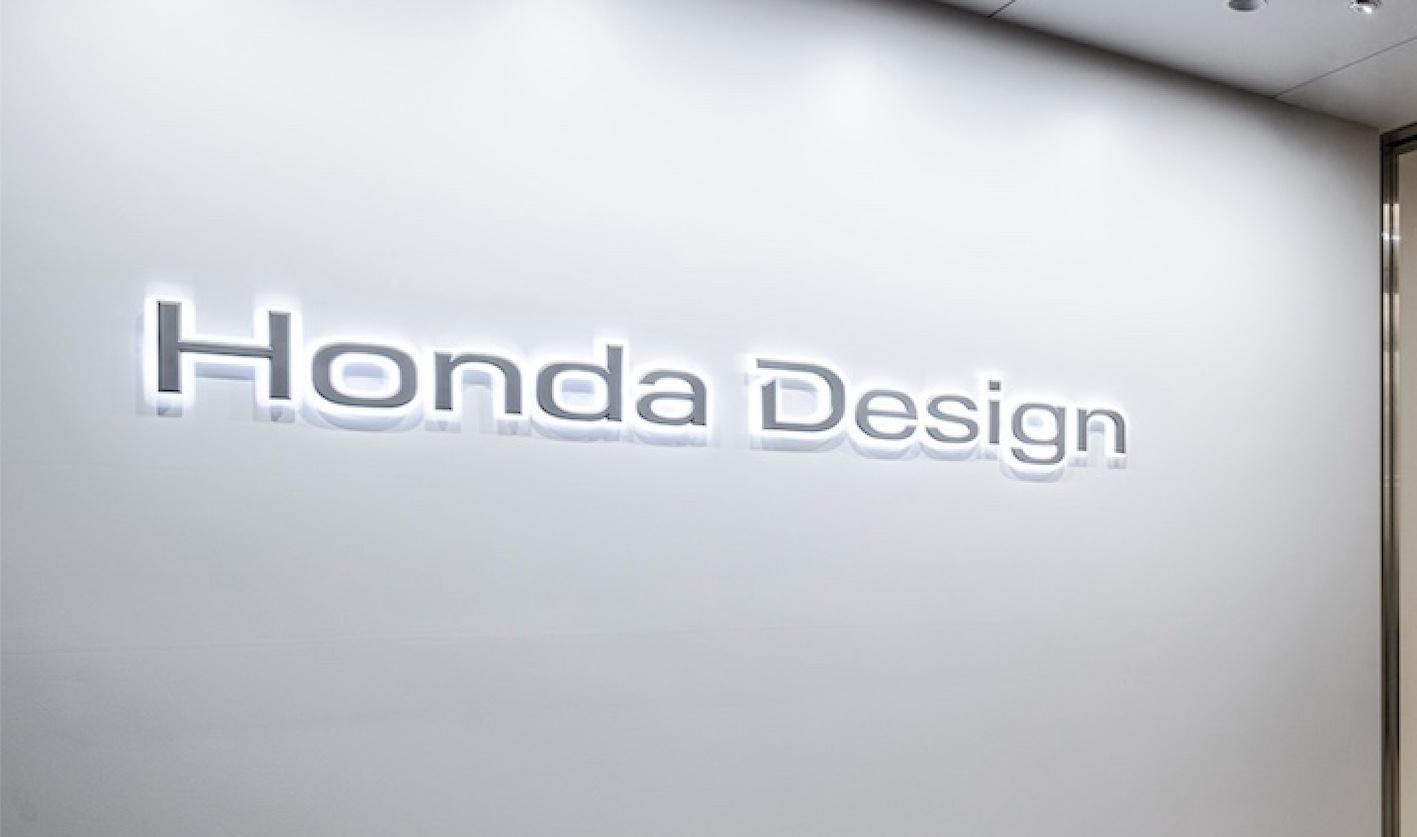The “Design Top Interview” series finally kicks off.
On a swelteringly hot summer afternoon, we conducted an interview with Mr. Toshinobu Minami, Managing Director and Head of the Design Center, at the newly constructed Honda Design Center located in Wako City, Saitama Prefecture, within the Honda R&D facility. The interview took place in a presentation room of the new building, still redolent with the scent of fresh construction, but I would prefer not to disclose the exact location of this room. The design department is a strictly confidential area, and the only place we were free to access was the welcome floor at the entrance.
The interview began with the showing of a video from the CES show of the HONDA 0 series, with concept models of the SALOON and SPACE HUB present at the venue.
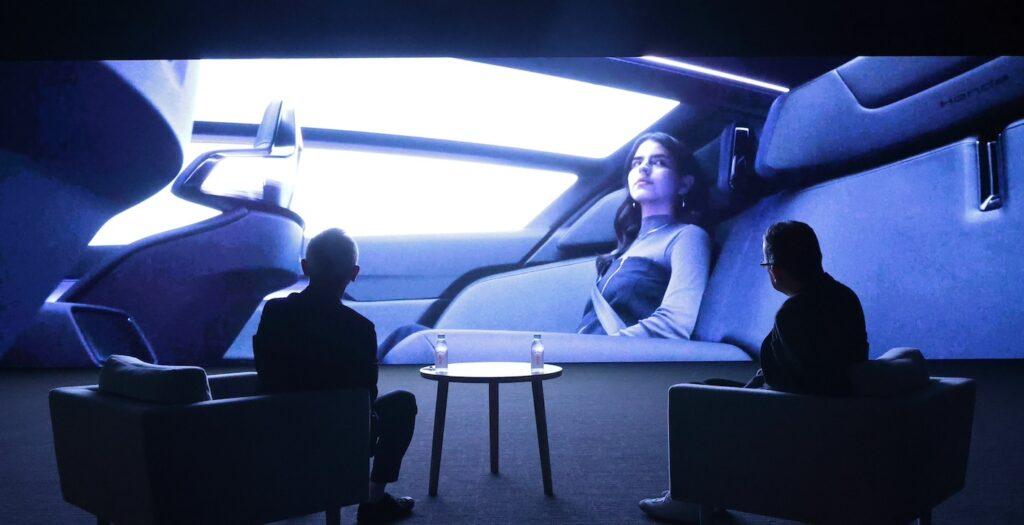
PHOTO: Hiroya Yamagami
Namba (CS Editor-in-Chief): Having been a long-standing member of the design organization at an automobile company, and having served as head of the design department, I have always contemplated what the ideal organizational structure for design within a company should be. Moreover, considering that the positioning of design departments in Japanese automobile companies differs from those in the West, I first asked about the role of the design department within Honda.
Mr. Toshinobu Minami, Head of the Design Center (hereafter Mr. Minami): While there are some differences depending on the business unit, I have spent my career focused on four-wheeled vehicles. When discussing specifically the four-wheel division, I feel that the design department at Honda is deeply infused with the passions and intentions of our predecessors.
Ultimately, the founder of our company, Soichiro Honda, had a passion for design. I believe that there were no other executives during the early Showa period who were as dedicated to design as he was. This was significant because it meant that the top management was genuinely concerned with what the design department was doing.
The role of the design department has evolved over time due to changes in management and the company’s positioning, but I believe that in this respect, Honda designers are very fortunate.
I did not work directly with Soichiro Honda. By the time I met or saw him, he had already retired from the company. However, I did have the opportunity to meet him when he visited the design studio. At that time, I was a newcomer, still working with clay. He was a lively and cheerful person, always ready to engage in conversation. I often felt from his words that he had a strong desire to create something unique, something different from others. He was a founder who truly loved phrases like “the world’s first” and “the best in the world.”
Namba: I had also heard from external sources that Soichiro Honda loved design. There were stories about him always visiting the design clay room and asking, “What are you working on now?” before leaving. However, I think that rather than just loving design, his judgments were always based on whether something was characteristic or ‘Honda-like.’ What do you think about that?
Mr. Minami: What I consider to be ‘Honda-like,’ as you just mentioned, is exactly that. There isn’t anything set in stone; it’s about creating things on your own. So, some might ask if we don’t value the past, but it’s more about a sense of surpassing the past to create new things.
For example, there were times when I wouldn’t really listen to what my superiors instructed. Normally, not following a superior’s orders in a company is unthinkable. But they would leave me be if I didn’t listen. If what I created turned out to be good, then that was acceptable. This is true across various departments, including Engineer; at Honda, if you talk back to your superior but end up creating something truly great, it’s forgiven.
Because I grew up in such a company, I used to think that all companies were like this. But when I started interacting with people from other companies, I realized it was different. I came to understand that our company is quite unique.
That said, of course, if I neglected my assigned tasks to do something else, I would get scolded. However, if I had time left after completing them, and I started working on something I wanted to do, they would turn a blind eye.
Essentially, in the end, everyone is only thinking about how to please the customers. So, at the root of it, everyone is the same. It’s just that the methods differ.
“Are customers really going to be happy with this?” There are vigorous debates, and naturally, opinions vary by generation. But being able to act freely and openly, and having a culture that overlooks such actions, I think, is very much characteristic of Honda.
I am grateful for that even now, and I try to extend the same freedom to my subordinates. Seeing iconic cars emerge from this approach, I think this ‘culture of freedom’ was quite rare for an old Japanese company.
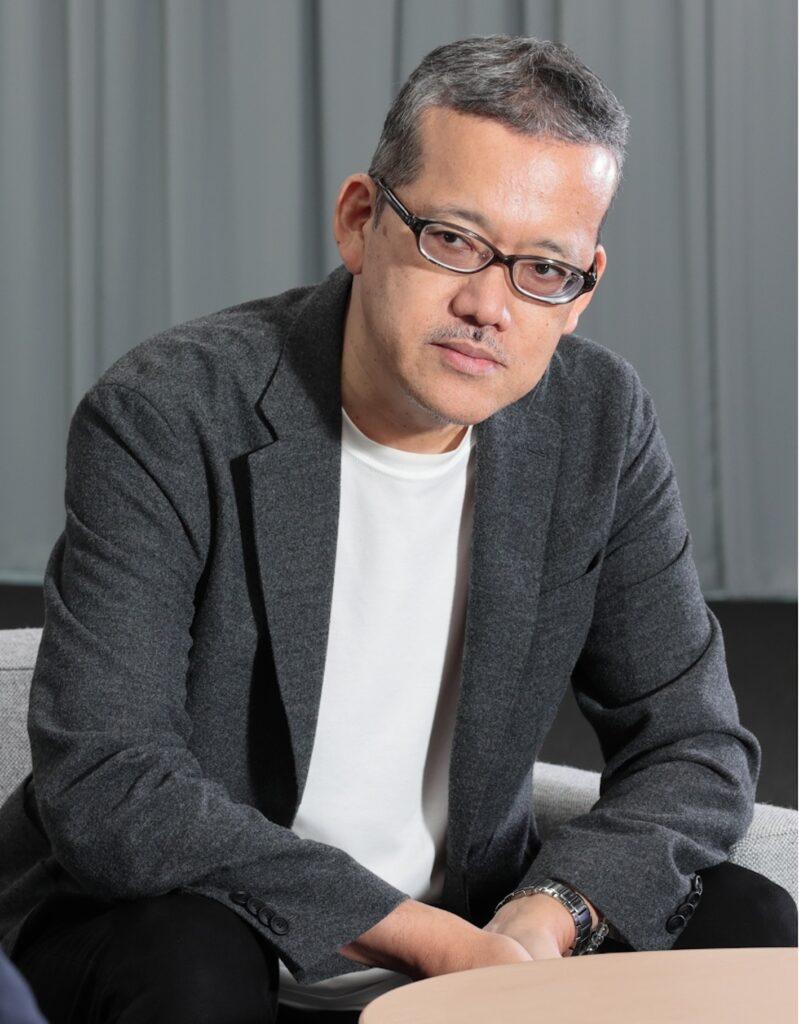
PHOTO: Hiroya Yamagami
What is the position of the design department within the company?
Namba: Does the design department get involved from the very early stages of product development?
Mr. Minami: Recently, as the company has grown larger, things have changed somewhat. However, a key feature of Honda’s manufacturing is the LPL* system, where the LPL is the development leader, effectively the boss of the development process, and the person responsible for the model. To be honest, in the past, they used to do pretty much whatever they wanted, which is unthinkable nowadays. There were several people who acted as if they were more important than the president.
*LPL = Large Project Leader
The LPL and the design team start working together first. They begin by looking at the market and other cars. The LPL and designers travel the world together, figuring out who their customers are and what the next era will look like. They engage in vigorous debates to develop the concept, discussing intensely what kind of value they want to deliver to which customers, often challenging each other with statements like, “Other companies could do that too, not just Honda.”
The initial planning by the LPL and design is a distinctive feature of Honda’s four-wheel division. When I was a newcomer, I traveled the world with the LPL. I liked making things and drawing, so I joined the company thinking I would be drawing a lot of pictures. However, I was surprised at first by how much other work there was compared to drawing. There was actually little time for drawing.
Namba: So, the design department wasn’t under any other department?
Mr. Minami: No, not for the four-wheel division. In the past, the development departments were all separate, but now, technology is divided into two groups. The team that works on new technologies is at Honda R&D, and the team that designs existing vehicles is at Honda Motor Co., Ltd.
The design department is now remaining within the research institute. From my perspective, it’s crucial for design to also be aware of new technologies. Nowadays, it’s not just about mechanical engineering; there are many aspects that have transitioned to being more science-oriented.
Namba: Why did you feel it was necessary to move it back? Is a design organization not effective if it’s hanging under a different department?
Mr. Minami: I believe that approach can work, but what I consider most important is that, for a designer’s career to progress successfully, understanding the real issues in design—why something didn’t sell or failed—is something that I think only professionals can grasp.
For example, it might have been a good design, but the product failed because the pricing was set incorrectly, or though the design was good, there were issues with performance. Or maybe using cheaper materials resulted in a compromised design. There are factors beyond design itself. Only a design professional can truly identify the real reasons why something didn’t sell. Otherwise, the reason for not selling might be simply dismissed with the statement, “The design was bad.”
I believe it hinders the growth of designers if the hard work of those involved is simply judged in such a way. For designers to truly develop, their work needs to be assessed by design professionals. Without this, trust and growth cannot be established. That’s the main reason.
Namba: In recent years, more companies in Japan have been establishing autonomous design departments within their internal organizations. However, there are still very few board members with a background in design. In Western countries, Korea, and China, it has long been common to have designers as board members, but Japanese manufacturing companies have not utilized designers in their executive teams. Furthermore, design departments have typically been placed under either engineering or product planning, with a general tendency to subordinate them to one of these areas. Indeed, as Mr. Minami mentioned, there may be some positives, but it is odd that there is no recognition of design (styling) as an integral part of business strategy. This is because styling expression is inseparable from a company’s market strategy and brand strategy. Furthermore, issues arise if there is no accountability at the start of development or if final decisions on styling cannot be made. Historically, designers often worked as if they were merely designing the outer garments that a product wears. Listening to Mr. Minami, it felt like Honda had a completely different approach to the design department from the beginning compared to other manufacturers.
Mr. Minami: An example of a change along the way is that now our president does not get involved in design decisions. I believe this is quite unusual for a mobility manufacturer. Previously, there was something like a final approval meeting with the president, but that has been discontinued. Regarding this, I was called by the board members previously, and they decided to leave design to the design professionals. Now, the authority to finalize design decisions, the right to say, “This is the direction Honda Design will take,” is held by me.
This is probably a significant responsibility, something not easily found in other companies, and naturally, I feel a tremendous sense of responsibility about it. That’s why, conversely, I try to keep my distance from the field as much as possible, to ensure that it’s not like the thief and the police becoming one.
Nanba: I see, I understand that very well.
Mr. Minami: We communicate the big ideas with the designers, but since I’m a designer myself, there are times when I feel like I want to say something about the design. If something really bothers me, I do speak up, but I try to avoid doing that as much as possible.
For example, I think my job is to determine things like, ‘Is this really what the world is looking for?’ or ‘Is this okay given the changing times?’ However, I take pride in the fact that there are very few Japanese companies that trust and leave so much to the design department like ours does.
Nanba: I think so too. I’ve been in the Japanese automotive industry for a long time, but I believe there aren’t many executives who understand the scope of the designers’ responsibilities to that extent.
Mr. Minami: For example, with the movie you just watched and the presentation we did at CES, it wasn’t a matter of just leaving everything to an agency. I personally requested everything from people I know and even handpicked the director. I had trusted people work on it, giving detailed instructions on everything—from the color of each shot to every last detail. I was working on it non-stop, even during the New Year holidays.
But the reason I was so particular about it is that I felt we needed to go that far to create a new brand and leave a strong impression of its world view. Every company puts a lot of effort into car design, so it’s expected to be good. Everyone is doing design work, so we need to find ways to differentiate ourselves within that.
In the past, we were able to differentiate ourselves through technological differences and unique features. We were a company that, of course, could stand out with our engines. However, as electrification advances and technology becomes more commoditized and similar, the areas where we need to create differentiation will inevitably be in the form and expression.
In this context, the importance of design goes beyond just the shape of the car; it also encompasses the form of services and how these are communicated to the world, which plays a very crucial role. Then there is sustainability. Particularly among young people in Europe, there is a strong focus on how much a company contributes to sustainability.
From that perspective, including corporate branding, the role of us designers has become much larger, and advancing this has now become my main focus.
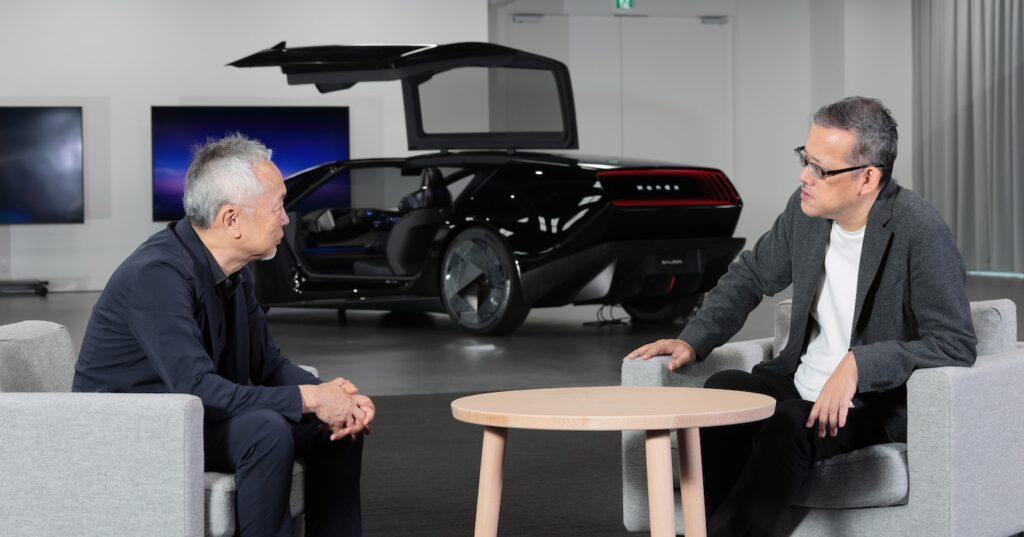
PHOTO : Hiroya Yamagami
The MM Philosophy in Honda’s Design Strategy
Namba: In a sense, a conceptual model like the HONDA 0 Series can set a clear goal and move forward accordingly, but when working on mass-produced cars, it’s necessary to respond to market needs. Nowadays, the Japanese market is no longer that large, and it’s clear that Honda’s four-wheel division must primarily focus on North America for revenue. Additionally, there’s Europe, Southeast Asia, and China to consider. Given this background, when developing the styling, do you adapt the design to suit each market, or do you aim to convey the message that “We are Honda, no matter where we are”? How do you manage or control your design strategy in this regard?
Mr. Minami: In that regard, things have changed over the years, but Honda has been practicing a “local production for local consumption” approach as a way to run a business unaffected by exchange rates. That’s why we established ourselves in the U.S. and entered China quite early on. This has been Honda’s way from the beginning, and we’ve continued with it, which has naturally led to an increase in vehicles tailored specifically for each region. When you look at this situation globally, there are both pros and cons from various perspectives.
What makes car design particularly challenging is that it’s not something you can just decide on and release next year. It takes time from planning to the final product. Judging where to take things while anticipating technological advancements involves a lot of foresight and intuition. But the company values this aspect greatly, which is why there’s a culture at Honda that allows the R&D department a certain level of freedom.
Along the way, we’ve had various experiences, but originally, Honda was a small company, and we couldn’t produce many cars. We started by making things that we, as Japanese, thought were good, and because they also sold well overseas, we gradually grew. However, once we began to see success abroad, we started to consider the feelings and preferences of foreign users, and we’ve focused on that ever since.
However, what I’ve been thinking lately, often when people talk about ‘changes of the times,’ is that this (pointing to a smartphone) has undoubtedly changed the world. Including the internet, it has made it possible for anyone to see the same information anywhere in the world. So, unless a country imposes strict controls, as long as it remains a free country, people can access common, global information.
What I feel, having gone through this situation, is that with the world being connected through smartphones and the internet, information has become more uniform. Although there are still issues like religion, national conflicts, and wars, I find that the sense of differing values between people from different countries is becoming less noticeable. It’s becoming less and less common to feel that people’s values are fundamentally different just because they come from another country.
What I mean is that we are thinking, “Let’s unify everything onto one bookshelf.” The reason we have to do this is, in part, due to the commoditization of technology.
Namba: It’s often said that brand design is important, and many companies adopt that approach. But what exactly do you mean by “unifying everything onto one bookshelf,” as you just mentioned? Does it mean making the exterior instantly recognizable as a Honda at first glance, or is it something else?
Mr. Minami: Yes, of course, it needs to be recognizable from the outside, but having a uniform appearance doesn’t necessarily make customers happy. I do think we need to present some sort of cohesive identity, but that doesn’t mean every motif has to be identical. In that sense, the “H” mark we showcased at CES carried a lot of meaning, and it’s these kinds of new messages that we need to unify.

Mr. Minami: At the core, it’s still about making cars. We want to design with a focus on people, valuing what makes them truly happy. This applies to both services and products, but I also have a strong desire for us to be a company that helps create a sustainable society—one that moves away from the era of disposable goods to a more circular economy. This is something President Mibe also believes in, and I share his conviction that we must be a company that contributes positively to the world for the next generation.It’s based on Honda’s original MM philosophy, but we intend to evolve it further in our designs. For that purpose, we focus on incorporating future technologies, including Honda’s own innovations, to create a new form of the MM philosophy for a new era. Things like making the car thinner, maximizing interior space, and ultimately making customers happy—those are what I believe are truly important.
Namba: Yes, when I looked at the concept of the HONDA 0 Series, I felt that if we reflected on the MM philosophy in its purest form again, it could indeed be expressed in a new way. As we discussed earlier about the package layout, in many cases, it usually comes down to a side view: here’s the engine, there’s the transmission, the front seats, and the rear seats. Up until now, the MM philosophy seemed to be about simply minimizing the mechanical parts when viewed from the side. However, I felt that the SALOON takes it further by expressing the MM philosophy in three dimensions, which is why I drew that top-down view on the CarStyling website.
Mr. Minami: I read your article and noticed that you had drawn a down view. I thought, “Wow! Someone actually understands what I’m trying to do.” It really captured what I’ve been saying and thinking, and I was deeply moved by it.
Namba: Thank you for that. Actually, while I was drawing that diagram, I was reminded of the first-generation Honda Today. At that time, I was a designer for a competing k-car manufacturer. So when Honda released the Today, I thought, “What is this!” Other k-car manufacturers, including ours, were very focused on making cars that could comfortably fit four people and still carry a lot of luggage — very ambitious designs. But Honda wasn’t thinking about that at all. It made me wonder if the customers driving our k-cars were really enjoying them. So, when the Today came out, it was a real eye-opener for me. I realized that perhaps what the customers truly wanted was something different, something with this new sense of style. Up until then, k-cars were always seen as small and somehow “less than” other vehicles, and k-car users felt a bit inferior because of it.
That’s what I remembered while writing the article.
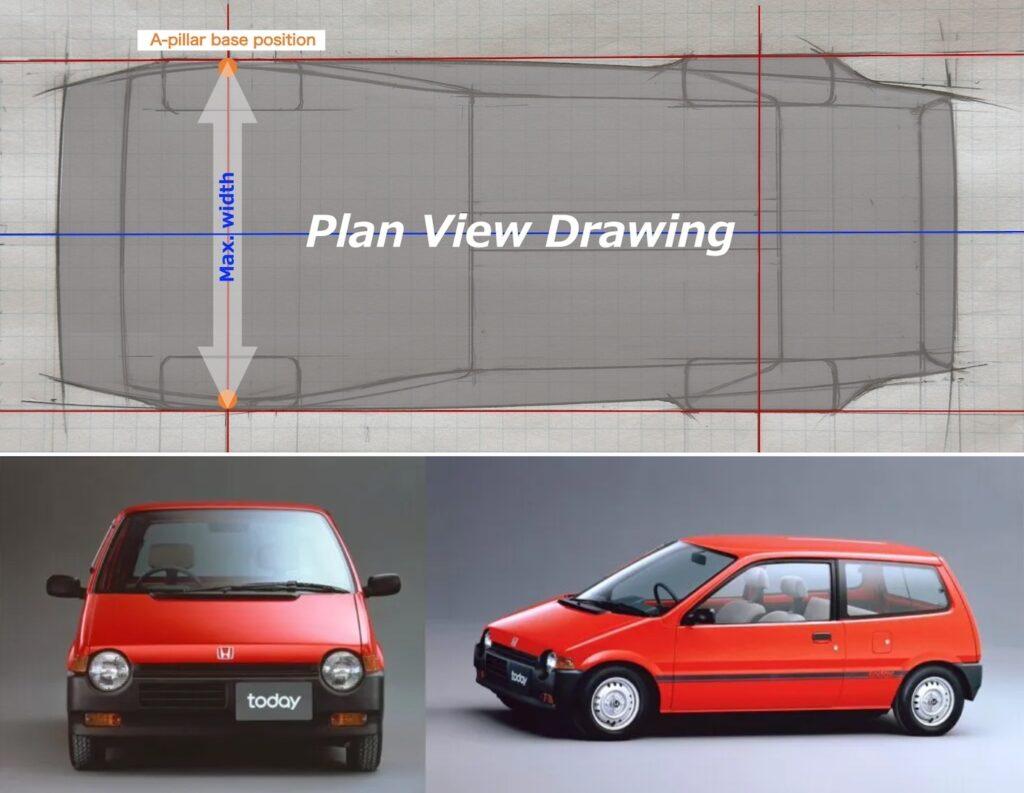
1985 Honda Today PHOTO: Motorfan
Mr. Minami: Thank you for that.
When I first met with the designers working on the SALOON, I chose a single sketch—the one with the upright side windows—and I told them to fully commit to it. Generally speaking, as with the NSX, you can easily make a low car look cool by slanting the side windows. But that’s precisely what we shouldn’t do.
We were also very particular about the glass roof. With today’s technology, glass has evolved in terms of formability and weight reduction, and it can also be darkened with polarization, making it function like a regular roof. By using a glass roof, we can gain more head clearance compared to traditional designs, allowing for a lower roofline. This reduces the frontal projected area, improves aerodynamics, and prevents unnecessary energy consumption.
Namba: Exactly. So, I thought you made clever use of the glass.
Going back to what you mentioned earlier about “unifying everything onto one bookshelf,” people often say, “Let’s do branding. Let’s create a common design language as a design department.” But what you’re talking about seems to be something entirely different—more like aligning a mindset or a conceptual philosophy, isn’t it?
Mr. Minami: That’s right. If I were to put it that way, something that lacks function might become boring after just three days if it’s only about style. When people buy a car, they often choose it because they like the design, and some people will keep washing it because they love it. But if it’s just about style, it eventually becomes dull, or the freshness and excitement gradually fade. On the other hand, there are things that, the longer you use them, the more you realize how well thought-out they are and understand why they are shaped the way they are. That’s what I believe is functional beauty. Functional beauty seems obvious, but when we were working on the SALOON, we decided to pursue the ultimate in functional beauty. Since there’s no engine, we thought, why not just eliminate the hood altogether? We aimed to thoroughly improve aerodynamics and reduce the frontal projected area. But at the same time, we wanted to make it surprisingly spacious inside. That was our goal, and we were determined to see it through without giving up. Otherwise, there would be no point in a company like ours existing.
We want to surprise people by proposing something that makes them think, “Wow, I didn’t know something like this existed.” But by “surprise,” I don’t mean just making them shout “Wow!” in astonishment. Instead, it’s more like, “What is this? What’s with this shape? But once I use it, I see—it’s actually really good. So that’s why it has this shape. I see, it’s well thought out.” That’s the kind of surprise we aim for.
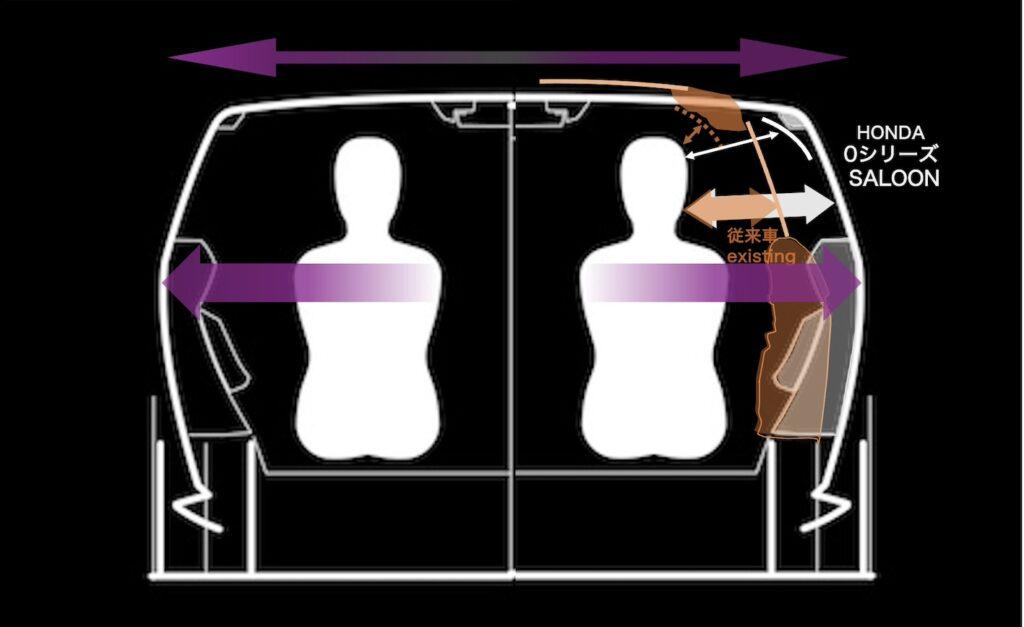
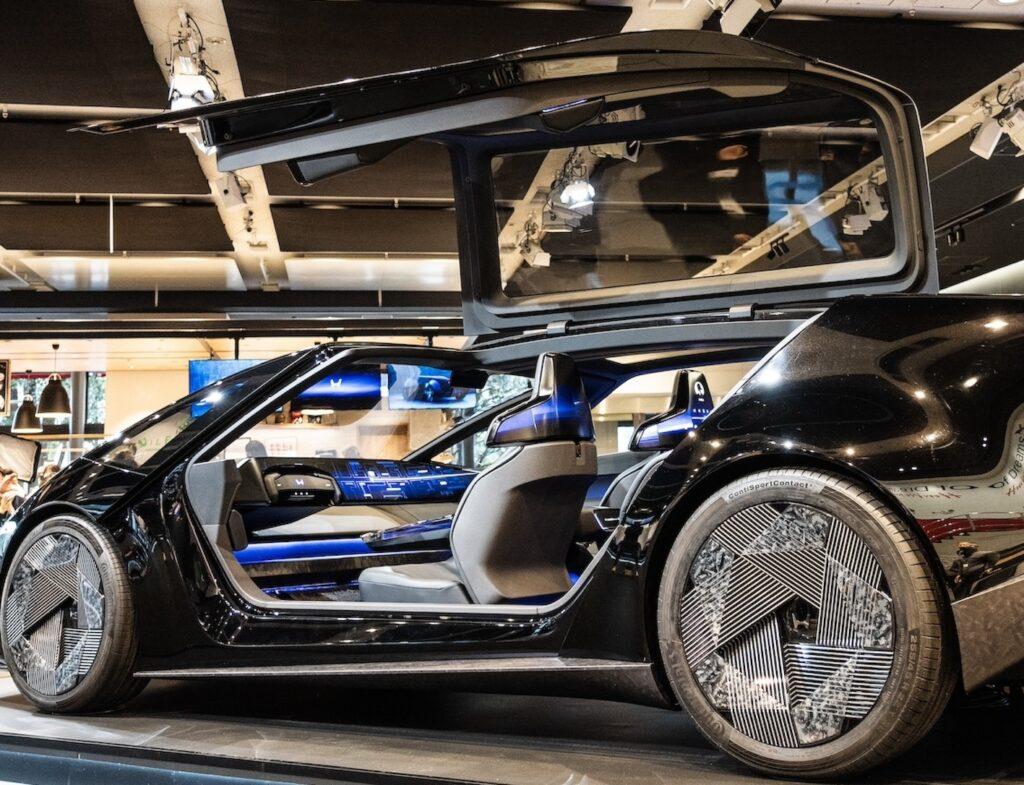
Mr. Minami: The Honda Cub, created by our founder, is the ultimate example of that, and nothing has surpassed it to this day. I also oversee the motorcycle division, and I believe the Honda Cub represents the pinnacle of functional beauty. I think the spirit that gave birth to such a product has always flowed through Honda, and that’s something I absolutely cannot compromise on.
What I always convey to everyone here, and what is posted on the walls—something that has been there since this design center was established—is the phrase “Surprise and Inspire.” At Honda, we have to surprise people first. Surprising them is what Honda is all about; it’s our way of life. But that’s not enough. After the surprise, there must be inspiration and emotion; otherwise, it’s not complete.
For example, if you give someone 100 roses and they’re surprised, but then they say, “How am I supposed to clean this up?”—what do you do? That’s what I mean. It’s not hard to surprise people; sometimes it just takes spending money. But to follow that surprise with genuine inspiration or emotion is not easy. Unless you do a lot of different things, people aren’t going to feel both surprised and inspired. That’s the kind of experience Honda aims to provide.
Also, with the HONDA 0 Series, I always tell the designers to pay special attention to the “beauty” aspect of functional beauty. People don’t work like machines, without emotion. When you think about why people want to buy a car, it comes down to human desires—there’s the desire for ownership, the wish to drive a cool car. What is considered beautiful may change with the times, but it’s natural for people, being human, to feel and seek beauty. That’s why we hang pictures in our rooms to fulfill our hearts, isn’t it?That’s why, when I chose the HONDA 0 Series, I decided on the design keyword “The Art of Resonance.” It’s not about creating art, but about evoking a sense of richness in the heart. When you see this car in your garage and think, “I’m glad I bought this,” or “It’s kind of cute,” and it becomes like a companion to you, I truly believe that cars, as industrial products, are something special.
Namba: Mr. Minami, how many years ago did you become the Head of the Design Center?
Mr. Minami: Four years ago.
Namba: I see. Maybe that’s why the current products still seem to have various colors as Honda. The real excitement is yet to come, right?
Mr. Minami: That’s why, right now, there isn’t much “surprise and inspiration,” is there?
Namba: Today, you’re here in Tokyo, but you often travel around the world, right? You have design studios in the U.S. and Europe. Is there one in Europe as well?
Mr. Minami: Yes, we’ve reopened in Oppenbach, Germany. It’s a small facility for now. Whether we will continue there in the long term is still undecided, but since it was originally a location where we also did mass production, we decided to restart there for now.
In the U.S., we’re looking to expand while focusing on Acura.
And, of course, we have China. But working with the joint ventures there is not always easy.
Namba: As the Head of the Design Center, does that mean you’re also overseeing motorcycles?
Mr. Minami: Yes, I oversee everything related to design. From this term, we’ve also integrated the Access* department into our division, so I’m handling Acsess as well. (*Access = genuine parts and accessories.)
Namba: That sounds like a lot for one person to manage.
Mr. Minami: I delegate that to each department. Delegation of authority is part of Honda’s culture. But I do communicate the big picture. I’ve been a Honda fan since my university days, especially when it comes to motorcycles. After that, I just need to take responsibility, so I trust them.
Namba: I see.
Today, I’ve learned that Honda’s design organization and its positioning within the company are quite different from other companies. And even our conversation itself felt like it had a somewhat unique flavor.
Mr. Minami: In a good way, Honda Design has never been about seniority, even from the old days.
Of course, we have veterans, but if you’re young and stand out, we don’t try to hammer you down; instead, we encourage you to go out there and compete globally! That’s the atmosphere we cultivate, and in that sense, Honda is a young company. The staff actively working here are young, and the designer who drew the key sketch for the HONDA 0 Series is in their 20s.
Namba: I’m really looking forward to seeing how the ideas behind the HONDA 0 Series will take shape in a more concrete form, even if not everything will remain exactly as it is. I’m especially interested in how these concepts will make their way into mass production. Finally, CarStyling is something I’d like professionals to read, of course, but I especially want those who aspire to be designers to read it. The reason is that the next generation of designers will be incredibly important. Mr. Minami, what kind of designers do you think Honda needs in the future? And what kind of designers would you like to see join Honda?
Mr. Minami: First and foremost, it’s best if someone who wants to become a car designer actually loves cars. But unlike the past, we’re in an era where design can no longer be done by just one person; it has to be a collective effort. For example, when you consider things like interior HMI systems, modern design is really a combination of many elements, and teamwork has become much more important than it used to be. So, ideally, we need someone who has a certain level of individuality but also strong communication skills and solid design skills.
Well, finding someone who has all of those qualities is incredibly difficult, of course.
But it doesn’t need to be just one person; if we can bring in people who each have their own strengths, then it becomes our job in management to combine them effectively. So, the kind of designers we want are people of all different types. We’re not set on any specific type of person.
But of course, if there were someone like Shohei Ohtani in the design world, we’d definitely want them. That said, young people are incredibly talented. We have designers who can create amazing sketches, like the one for the HONDA 0 Series SALOON I mentioned earlier.
Namba: I see. So, you’d like students with their own ideas and unique characteristics to aim for Honda.
Thank you for being so open with us today. I got a real sense of the atmosphere at Honda and learned about what Honda Design is aiming for and its approach to brand development. I believe this interview will inspire even more designers to want to join Honda.
Thank you very much.
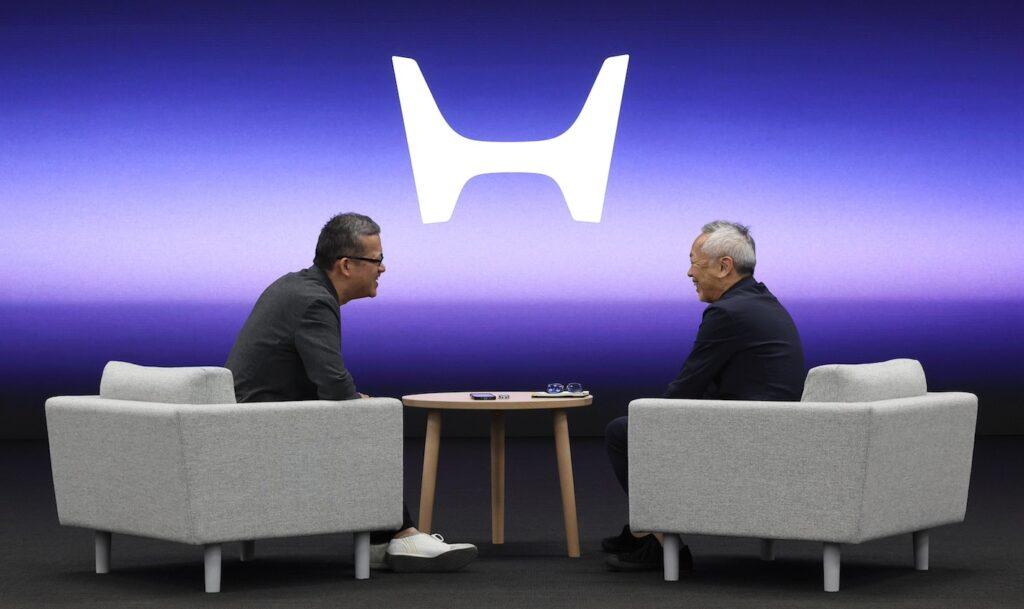

![by Car Styling [カースタイリング]](https://motor-fan.jp/wp-content/uploads/2025/04/carstyling-jp_logo.png)
